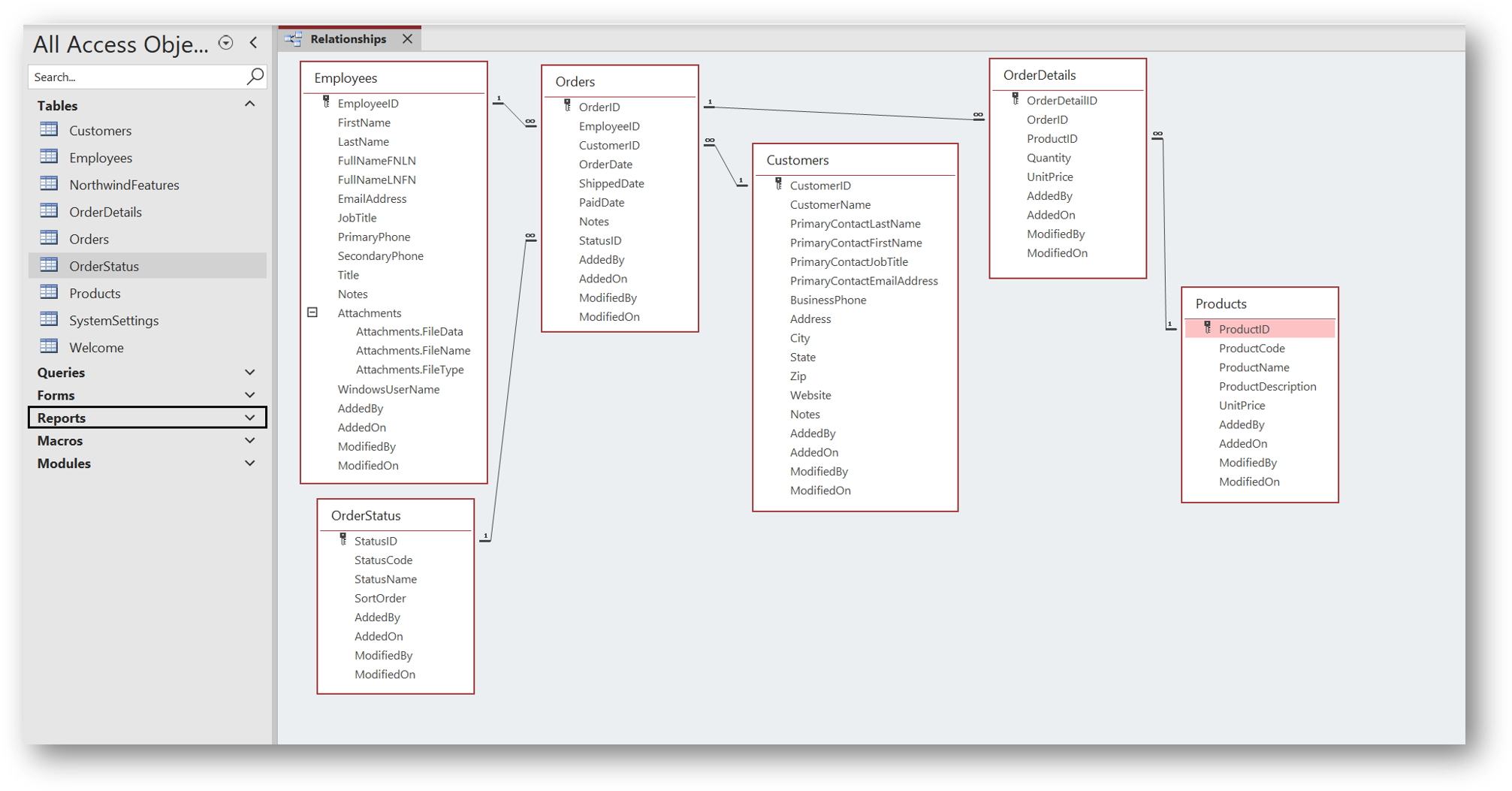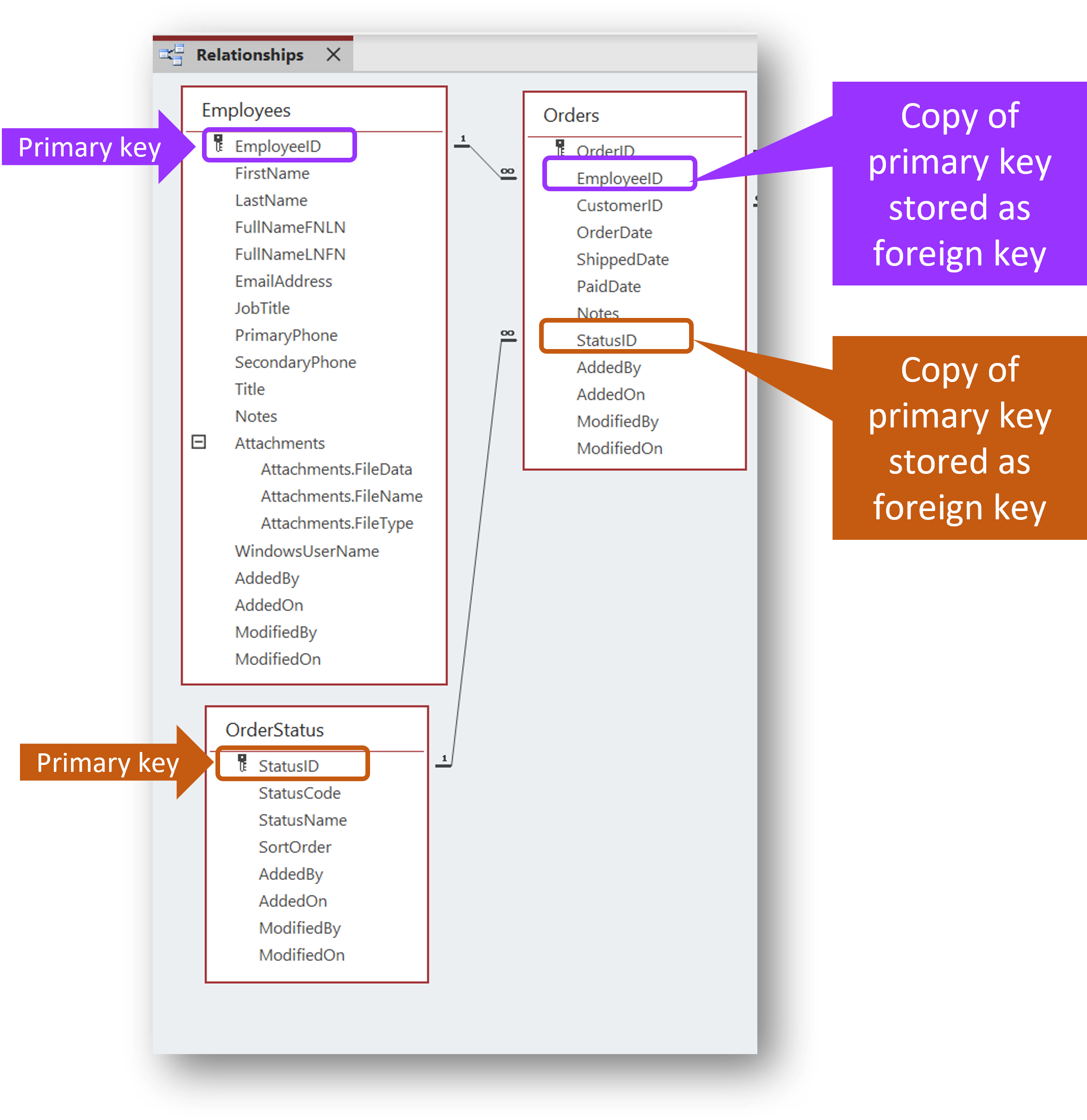
Tools for Information Literacy
Entities are the foundational units
Healthy, well-constructed entity classes are the foundations of an effective relational database.
Entity Classes
An entity class is the definition of the worksheets/tables that will store data, so they're essential building blocks of any database
A database should have a separate entity class/worksheet/table for every major component of the database
Data should not be unnecessarily duplicated in multiple entity classes/worksheets/tables
Duplicating data is a common error,
but it's easy to avoid if you structure your entity classes well
An entity class is essentially an object wrapper for a database table.
The attributes of an entity are transformed to columns on the database table.
Each entity set is a single table, analogous to an Excel worksheet,
which contains entities and attributes which are analogous to
rows and columns in an Excel worksheet.
Terminology Comparison
| type | ⇒⇒⇒⇒⇒⇒ | ⇓⇓⇓⇓⇓⇓ |
| ERModel entity set | composed of entities | which have attributes |
| Excel worksheets | composed of rows | which have column header cells |
Entities
An entity is a collection of facts about a particular person, event, or other item of interest
- For example, in a library database, authors and their details might be an entity in an Authors entity class
- Books and their information might be a entity in a Books entity class
Each row contains a record which is a single entry in a table and each record is composed of several descriptive fields called attributes.
Once you have entered entities into a worksheet/table, the collection of entities is an entity set
Creating Entity Classes
When creating databases, sketch out the different entity classes/tables you will need and the data contained in the entity classes/tables before you begin
Focus in the image below on the attibutes (descriptors) contained in the tables (a table is an entity class, like "Employees").

Attributes are descriptors of entities
Some attribute data types
| AutoNumber | Automatically increments | used for primary key (unique identifier) |
| Number | integers that are negative or positive | not numerals that do not have numeric values, like SSANs, PIDs, ZIP Codes, or telephone numbers |
| Text | used for words or non-numeric-value numerals | |
| Currency | currency amounts | with choice of decimal places |
| Date/Time | Microsoft tools, like Excel and Access, store dates and times as a number representing the number of days since 01 January 1900, plus a fractional portion of a 24 hour day | formatting is necessary to have the numbers display as dates and times |
all attribute types have properties - Some properties are primarily for text fields
Some attribute properties
| Field Size | number of characters | |
| Format | how the field's contents will be displayed | |
| Decimal Places | when data type is numeric | |
| Default Value | for new entries | |
| Validation Rule | range of acceptable entries | checks values |
| Required | a yes/no field | indicates if a value is mandatory |
| Indexed | creates an index for the field | improves searching and sorting |
Setting Primary Keys
To distinguish one entity from another, entity sets contain a primary key attribute
the primary key is an identifier - such as a part number, a product code, or an employee ID - that is unique to each record
The primary key should be a piece of information that won't change frequently
these keys link together the related entities/rows in a relational database/entity set
a foreign key is a connector - it is a copy of a primary key for one entity in one entity set - that is placed as an attribute in a different entity in a different entity set to relate the two entities, in two different entity sets, together
